Summary of the Experimental
Approaches to Origins of life...
|
| 1. Prebiotic
Primordial Soup |
|
 |
Mimicking
the primordial conditions of Earth in 1953, Miller &
Urey abiotically created amino acids by exposing a mix of
volcanic gases [ammonia, methane, hydrogen sulfide,
CO2] to a lightning-like electrical spark. Using modern
analytical procedures Jeff Bada & Eric Parker analyzed
Miler samples years later and found 23 amino acids, 4
amines, and several other organics, suggesting that
volcanic eruptions & lightning may have synthesized a variety of pre-biotic
organic molecules. |
| 2. Hydrothermal Vents |
|
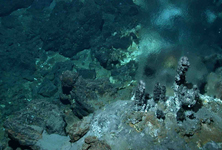 |
Submarine
hydrothermal vents spewing key
hydrogen-rich molecules along with mineral catalysts may
have provided the first pre-biotic
molecular system. Carbonyl sulfide, a vents
chemical, and added minerals has been used in the lab to
form peptides from amino acids.
 |
| 3.
Meteorite-Comets-Asteroids |
|
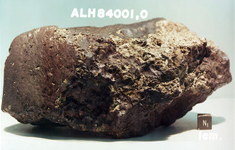 |
Carbon rich
meteorites, known as carbonaceous
chondrites (such as the Murchison Meteorite
ALH84001), contain amino acids, as glycine, alanine, and
glutamic acid. Alkanes also occur. Measured purine and
pyrimidine compounds are indigenous to meteorites. Comets
also contain lots of organics. Many organic
compounds, which are common
to life on Earth, were already
present in the early solar system and may have
played a role in life's origins on Earth. |
| 4. Role of minerals |
|
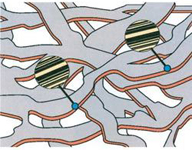 |
Minerals may have allowed the
first molecules of life to react with each other (in clays). Their surfaces may have allowed them to concentrate and to
even organize them into polymeric patterns, like genes do
now. Alex Cairns-Smith suggested that mineral crystals in
clay may have allowed organics to
organize in complex patterns.
 |
| 5. Ice
glaciers |
|
 |
Ice, hundreds of feet thick,
might have covered the Earth's oceans 3 billion years ago
and could have protected the
fragile organic compounds in the waters below from UV light and cosmic ray impact.
The cold temperatures could have helped these molecules
survive longer, allowing key reactions to happen. |
| 6. RNA World |
|
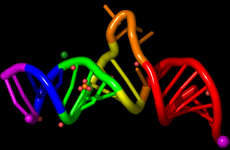 |
RNA can store information, like
DNA, & has catalytic enzyme-like activity, and
functioned (?) to help create DNA and proteins and
therefore may have supported pre-cellular life, being a
major step in the evolution of cellular life. Self-replicating molecular systems may
have originated with RNA. This idea being a gene-first model of life.
 |
| 7. 'Protobionts' |
|
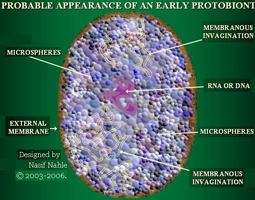 |
Origin
of Metabolism... Life may have begun with
smaller molecules interacting with each other in cycles of
reactions. These might have been simple "membrane" capsules.
Over time more complex molecules that performed these
reactions better than the smaller one could have evolved a "metabolism-first" model of life's
replicating systems. |
| 8. Panspermia |
|
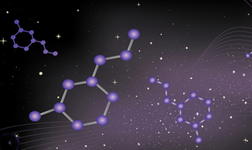 |
Maybe
life did not originate on Earth at all, but was brought
her from elsewhere in space. Earth is routinely bombarded
by space debris and maybe microbes are capable of
surviving space travel. Life may have hitchhiked on comets
from other star systems... but then
how did Life begin elsewhere in space?
7 theories on
Origins of Life
N |
| |
|
|
Major Gaps in Knowledge of Origins of
Life Research* |
|
|
| Skip the material
below |
| It
was a dark and stormy night - 5 probable
steps in Chemical Evolution of Life |
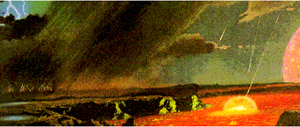
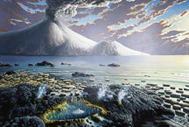 |
|
|
| |
back
|









